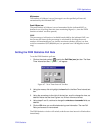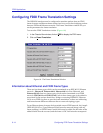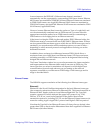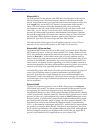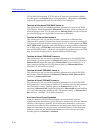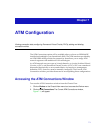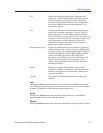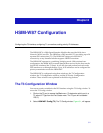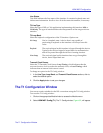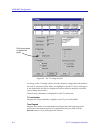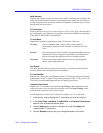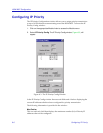
Accessing the ATM Connections Window 7-3
ATM Configuration
VPI Displays the Virtual Path IdentiÞer assigned to the
connection. Virtual Path IdentiÞers are used to group
virtual connections, allowing for channel trunking
between ATM switches. Each VPI can be conÞgured to
carry many different channels (designated by VCIs)
between two points.
VCI Displays the Virtual Channel IdentiÞer assigned to the
connection; allowable values are 0 - 1023 for each VPI.
Each assigned VCI must be unique within its deÞned
VPI: for example, you can assign a VCI of 14 as many as
four times: once with a VPI of 0, once with a VPI of 1, and
so on. Remember, it is the combined VPI and VCI
designations assigned to a channel that creates the
grouping of virtual connections.
Encapsulation Type Displays the method used to encapsulate LAN packets
on the selected circuit. Current versions of HSIM-A6DP
Þrmware use 802.3 VC-based multiplexing for bridging
protocols (designated VC MUX 802.3 Bridged); future
versions will add support for ATM Forum LAN
Emulation and CabletronÕs SecureFast Switching. You
may also see some connections assigned a type of
ÒotherÓ; these are default connections that cannot be
modiÞed or deleted.
Status Displays the current administrative status of the
connection: enabled or disabled. In current versions of
Þrmware, all connections are enabled by default, and
cannot be disabled.
UpTime The length of time the selected connection has been
enabled.
Add
Selecting the Add button either adds a new connection or modiÞes an existing
one, using the parameters entered in the Þelds below the list box. A conÞrmation
window will appear for both additions and modiÞcations.
Delete
Selecting the Delete button deletes the selected connection; a conÞrmation
window requires that you conÞrm the deletion.
Refresh
Selecting Refresh refreshes the connection information displayed in the window.



